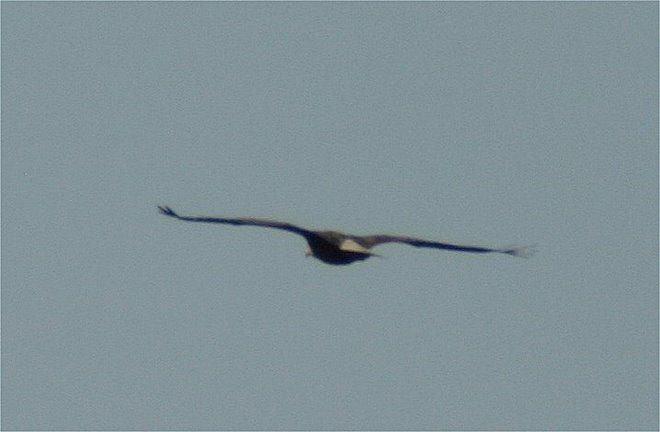On 2 Nov. 2007, Bill James found at the Harvey’s Knob (HK) site that the Red-tailed hawks weren’t flying past the site during the morning hours while he was experiencing westerly winds at a velocity that should have provided the Red-tails with a ridge lift soaring opportunity.
He did find a substantial number of Red-tails after the noon hour and he wondered at this apparent contradiction in what we have come to believe is the motivation for Red-tails to pass the HK site. Bill did a little research, checking with two weather stations at lower altitudes and found that the lower altitudes did not experience the wind velocity that the higher altitudes did during the morning hours. Therefore the Red-tails that were perched on the valley floor the night before did not experience winds strong enough to influence them to seek out the ridge lift condition when they awoke that morning.
They sought and probably found a few thermals suited for soaring flight during the morning hours. These thermals were tilted by westerly winds toward the crest of the Blue Ridge where Bill was diligently perched. But the strong winds began to dissolve the thermals and left the Red-tails to seek out and find the ridge lift opportunity for soaring flight that they missed when they left the perch. It was at this time that Bill was able to start his count.
In my years of hawkwatching during the Red-tailed hawk migration season I have found the same characteristics at the HK site. No flight during the AM hours but a reasonable though not sensational flight in the PM hours. Wind velocity was the same all day. I have also watched the Red-tails migrate from a valley site at the Woodpecker Ridge Nature Center (WRNC) site.
Lo and behold at the WRNC site there is always a flight in the early morning hours.
When the winds are moderate on the mountain they are light in the valley. Light winds will not cancel thermal activity but strong winds will. Therefore in the morning hours when the winds are moderate to strong on the mountain and light in the valley the migrating Red-tails will choose thermals for there desired soaring flight southward. But when the Red-tails reach the top of the thermals they will find that the thermals are not only tilted toward the mountain when the winds are westerly the thermals will loose their strength for upward flight. The Red-tails will then gravitate toward the mountain. Quite a few will continue to proceed southward via thermals which are by their nature displaced too far from the mountain for good viewing from the mountain.
What Bill found on 2 Nov, 2007 is that the wind velocity varies and that where the birds perched the night before also varies. The Red-tails moving north to south the day before may not have perched on the mountain for the night. The next morning when they awoke the Red-tails sought some indication for where their opportunity for soaring flight would occur. Ordinarily one would assume that a westward wind sweeping across their bodies would have influenced them to seek ridge lift. But, if the winds at their perch were light they would seek their old standby: the solar induced thermal.
Thermal soaring Red-tails at the HK site are very difficult to find as thermals do not occur very close to the site. But ridge lift soaring opportunities will bring the hawks very close to the site.
If the hawks are flying far from the site on thermals in the morning and close to the site in the afternoon, the day on watch can be well described as a differential in wind speed between the AM and PM hours.
As an aside my observations on this type of day in the Red-tail migration season at the HK site are that many of the Red-tails seen in the PM hours have full crops indicating that they may have spent the morning hunting prey rather than soaring flight conditions. But, if that was so, the kudos should still be presented to Bill James for his inexhaustable research in reminding us all of the fact that we should have known all along. The wind is not as strong in the valley as it is at any altitude above the valley. And, that fact alone is very important in understanding the behavior of hawks in migration.
Dave Holt
Thursday, December 6, 2007
Subscribe to:
Post Comments (Atom)

No comments:
Post a Comment